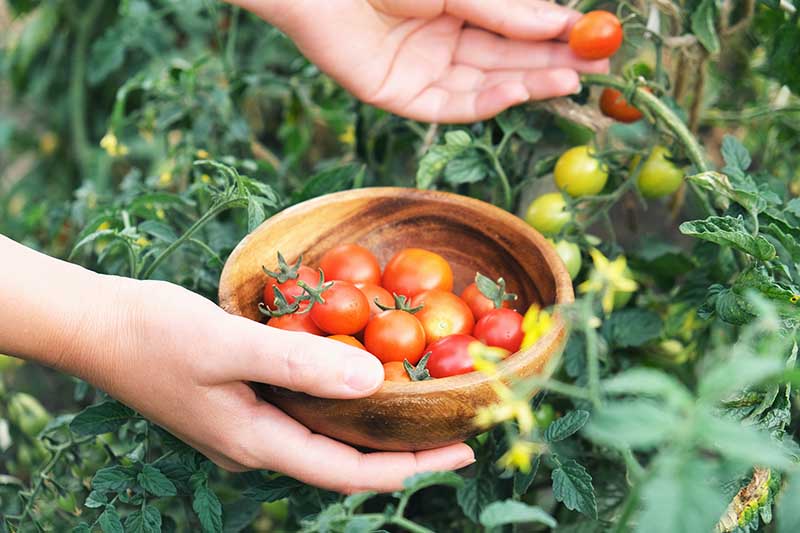When Did Organic Farming Start? Pros, Cons, & History
-

- Last updated:

Organic farming is the method of growing crops and rearing livestock using animal-based and natural products, rather than synthetic ones. The principle of organic farming was first mooted in the early 1900s, by Sir Albert Howard¹, based on ancient Indian farming techniques. However, it wasn’t until the 1960s that we saw the modern boom for organic farming, driven by a demand for organic food.
The book Silent Spring by Rachel Carson highlighted the potential environmental damage that was being caused by the use of chemical insecticides and can be credited for the drive in organic farming that has occurred over the past 60 years.
Early 20th Century

The earliest principles of organic farming were first discussed by Sir Albert Howard in the early 1900s. Having worked in agriculture in India, Howard had experienced natural farming practices firsthand and pushed for similar practices to be used in the West. This initial push was concerned more with the efficiency of farming than any environmental concerns.
One of the first uses of the term “organic farming” came in the 1940s with the book Look to the Land by Walter James and when J.I. and Robert Rodale published the magazine Organic Gardening and Farming.
Late 20th Century

It wasn’t until the 1960s that consumers started to take an interest in organic food and the organic farming methods that created it. The publication of Silent Spring by Rachel Carson brought attention to the environmental damage that was caused by traditional farming methods.
Interest in organic food continued to grow through the rest of the 20th Century and beyond and the 1970s is typically described as the period in history when agriculture was separated into organic and non-organic farming techniques.
Modern Day

Organic food sales amounted to $20 billion in the US in 2008, and this figure had more than doubled¹ to $48 billion by 2019. Similar figures were seen in Europe, too. However, organic farming and organic produce remain a relatively small portion of overall food growth and consumption.
For example, in 2016, just 0.5 million of the UK’s 17.5 million hectares of agricultural land were using organic growing methods. There are an estimated 2.8 million organic producers¹ around the world, with more than 70 million hectares of land being used for organic farming.
Advantages of Organic Farming
- Reduction in Greenhouse Gas Emissions – The production of synthetic fertilizers uses a lot of fossil fuels and the burning of these leads to the production of greenhouse gases like methane and nitrous oxide. Figures suggest that non-organic farming generates 40% more greenhouse gases than organic farming methods.
- Better for the Environment – As well as producing more greenhouse gases, conventional farming uses chemicals in pesticides and fertilizers. These products can and do run off into rivers and can cause problems for local wildlife. Organic farming uses organic methods of controlling pests and insects, and these do not negatively impact wildlife in the same way.
- Greater Sustainability – In organic farming, natural compounds are added to soil to make it more fertile. These compounds do not cause the deterioration or depletion of natural nutrients, and organic soil has been shown to have greater water retention. This means that organic farms are more sustainable and there are benefits to the farmer during times of drought.

Disadvantages of Organic Farming
- Organic Food Costs More – Organic farming has higher labor and material costs, which are passed on to the consumer. Although estimates vary, some suggest that organic food costs more than double that of non-organic alternatives, with the greatest difference coming in organic meat products which are 180% more expensive than non-organic meat products.
- More Room Required For Organic Farming – Although it is possible to farm, grow, or rear the same amount of organic produce on the same amount of land as non-organic farms, it takes more room to establish an organic farm in some cases. This is because neighboring farms that use non-organic methods can taint the organic crops. The land around the edge of organic farms may be unusable for growing crops.
- Organic Farming Is More Labor Intensive – Organic methods require more human labor than conventional farming techniques. Additional requirements mean more laborers are needed and there are additional overheads and costs associated with this. The greater labor requirement is one of the reasons for the extra cost associated with organic products.
Final Thoughts
Organic farming was first discussed at the turn of the 20th Century and gained prominence in the latter half of the century. The 21st Century has seen an even greater impetus for the organic movement.
Many countries have strict regulations to determine what food can be labeled as organic and more money is spent on organic food than ever before. However, while there are environmental and health benefits to organic farming, it is more labor-intensive than conventional farming, and the food it produces usually costs more, as a result.
Featured Image Credit: katerinavulcova, Pixabay
Contents


